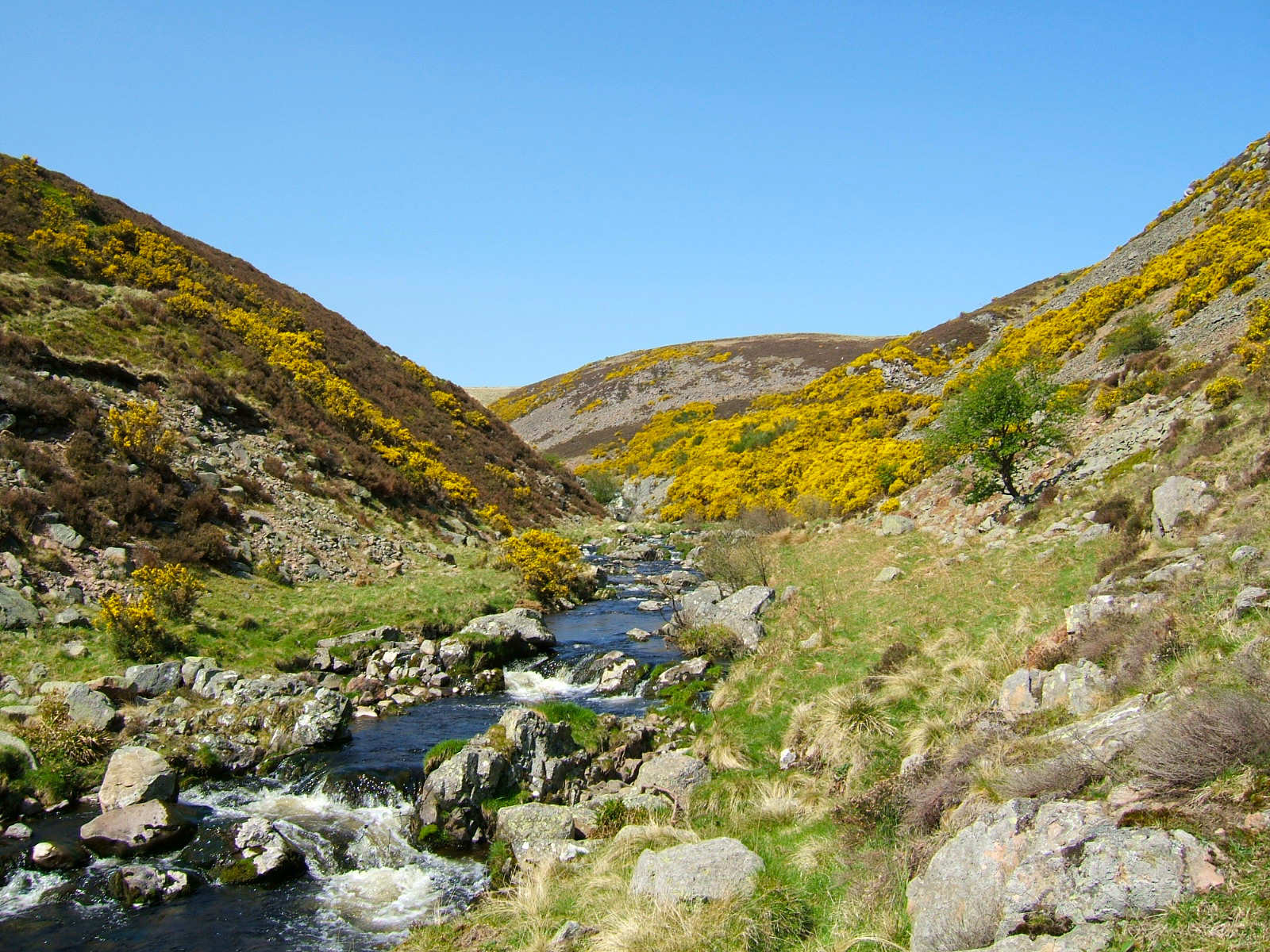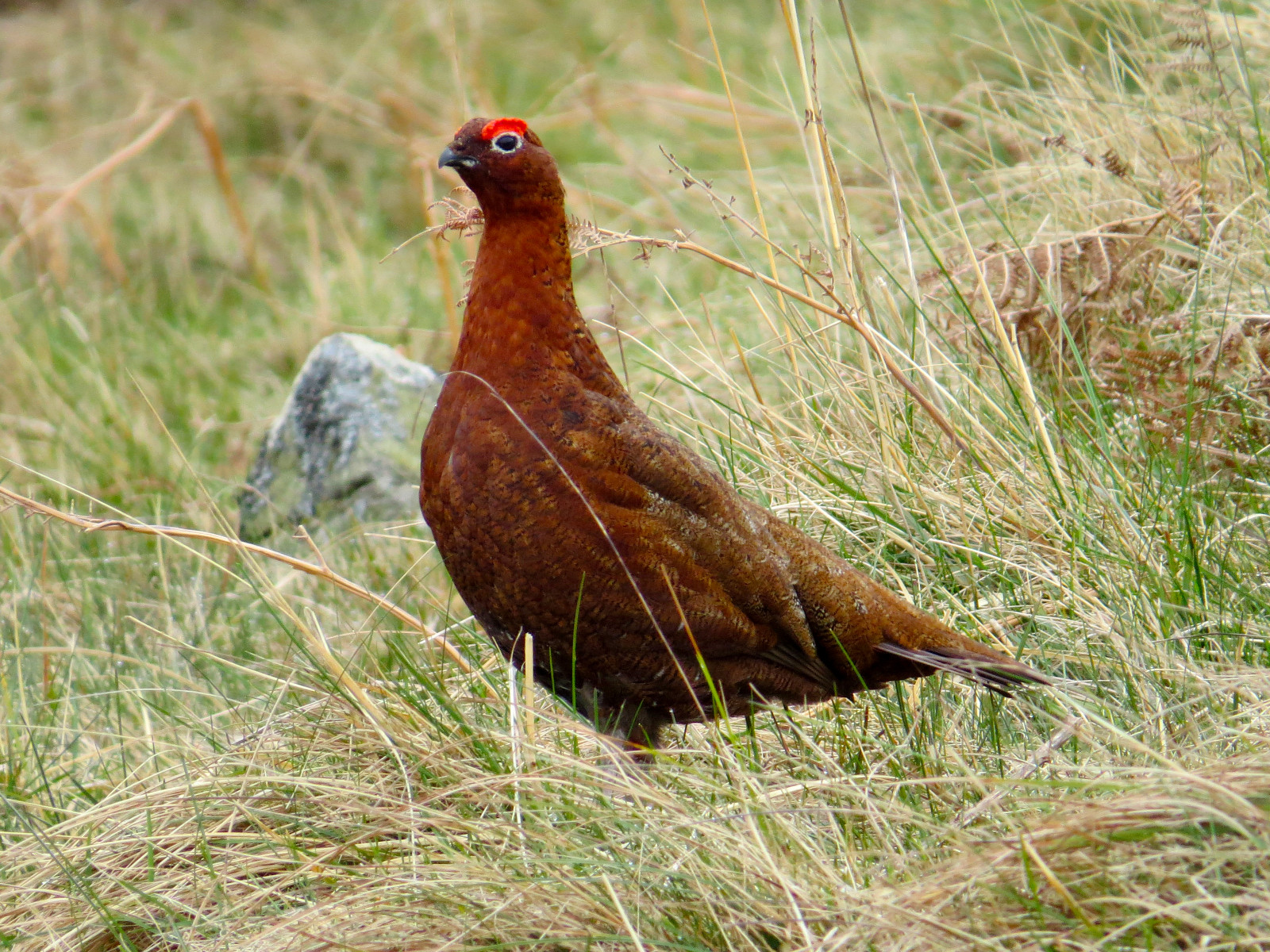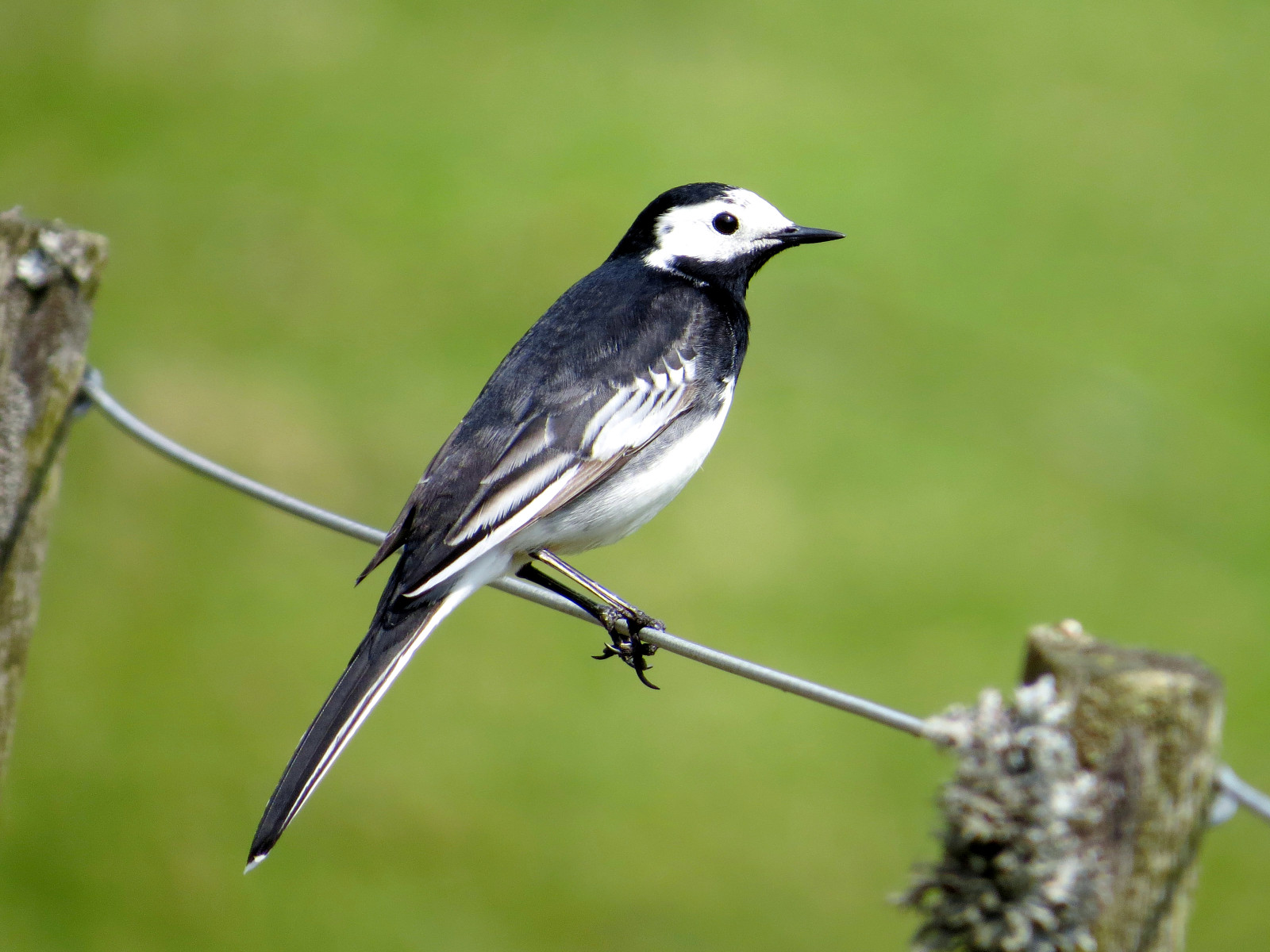Charger images
Les formats d'image autorisés sont de type jpeg, png ou gif
La taille maximale du fichier doit être de 20MB



A steep-sided valley in the Cheviot Hills, with a good selection of upland and woodland birds
The Harthope is one of Northumberland's best upland valleys, with a mix of semi-natural Alder-Oak-Birch-Hazel woodland, Hawthorn scrub, sheep-grazed grass, and higher up, heather moors and some rocky crags and scree. The highest ground, on The Cheviot (815 m), is topped with blanket Sphagnum bog. If you are very lucky, the strenuous climb to the top may be rewarded with Pluvier guignard on migration in May or September.
In the higher, steeper parts of the valley, Merle à plastron breed, together with Traquet motteux. Large numbers of Pipit farlouse (the commonest bird here!) and Alouette des champs breed on the more open grassy slopes. The heather moors have large populations of Lagopède d'Écosse, sadly now managed for shooting; shooters also release large numbers of Perdrix rouge and Faisan de Colchide every year, likely with major detrimental effects on native ground-nesting birds. The lower slopes and woods hold Pic vert and Coucou gris, and Tarier pâtre is a recent colonist with milder winters allowing their survival. Warblers include Pouillot fitis, Pouillot véloce, Fauvette des jardins, Fauvette à tête noire and Fauvette grisette. Few waders are present, but Bécasse des bois are resident in small numbers and Huîtrier pie and Chevalier guignette breed along the Harthope Burn; there are also good numbers of Cincle plongeur and Bergeronnette des ruisseaux on the burn.
Sadly, the site has not escaped the general declines in so many species; several have disappeared or become very scarce in recent years. Pipit des arbres, Gobemouche noir, Mésange nonnette and Pouillot siffleur have all been lost or become hard to find, and even Rougequeue à front blanc and Tarier des prés are much harder to find than just a few years ago. Raptors too have also become less easy to find, with just a few Buse variable and the odd Grand Corbeau, while Busard Saint-Martin and Faucon pèlerin have largely disappeared, probably due to illegal persecution related to the grouse shooting.
Like most upland sites, the area is bleak in winter, though deep snow seems to be largely a thing of the past. Despite this, good numbers of Grive mauvis and Grive litorne can be found, and the Birch and Alder woods attract Sizerin cabaret and Tarin des aulnes additional to the resident breeding numbers.
Unfortunately, only accessible by car; no public transport nearby. Steep slopes on the road in make the site difficult for cyclists. Click on a P in the map for directions.
This is one of the best places in Northumberland to see Adders (Vipera berus), Britain's only venomous snake, though they are not easy to find. Cool but sunny days in spring offer the best chances, when they come out into the open to bask in the sun. For their (and your own!) safety, do not touch them. Other 'non-birds' to look for include Common Toad, Roe Deer and Brown Hare.
Votre feedback sera transmis à l’auteur.rice de cette zone et à l’équipe éditoriale de Birdingplaces, qui l’utiliseront pour améliorer la qualité des informations. (Vous souhaitez publier un commentaire visible en bas de page ? Fermez cette fenêtre et choisissez l’Option 1 : « Publier un commentaire, un conseil ou une observation ».)
Veuillez fournir des suggestions d'améliorations ou d'ajouts au texte de ce site ornithologique.
Veuillez fournir vos suggestions d'améliorations ou d'ajouts à la carte.
Veuillez fournir des suggestions d'améliorations ou d'ajouts à la liste des oiseaux.
Cliquez sur l'icône de l'oiseau () Insérez les noms d'oiseau dans votre langue. Ils seront automatiquement traduits pour les autres usagers !